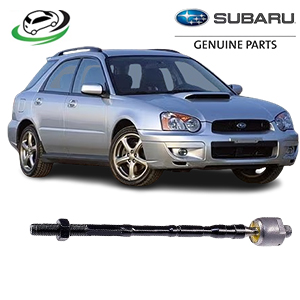-13%
Get Subaru Forester 2.5L MT X 2010 Engine Valve Cover Gasket 13294AA070
The engine valve cover gasket is a critical component in the engine assembly, serving as a seal between the valve cover and the cylinder head. Its primary role is to prevent oil leaks and protect the engine from contaminants. Understanding the functions, benefits, maintenance practices, and replacement procedures for the valve cover gasket is essential for vehicle owners and automotive enthusiasts.
1. What is an Engine Valve Cover Gasket?
The valve cover gasket is a rubber or silicone seal that fits between the valve cover and the engine block, specifically the cylinder head. The valve cover itself houses the valvetrain components, including the camshaft, rocker arms, and valves. The gasket is designed to withstand high temperatures and pressures within the engine, maintaining a reliable seal to prevent oil from leaking out and contaminants from entering.
The gasket typically consists of multiple layers, including a core material and a sealing surface, which help to provide durability and resistance to wear. Over time, however, the gasket can become worn or damaged due to exposure to heat, oil, and vibrations from the engine.
2. Functions of the Engine Valve Cover Gasket
The valve cover gasket serves several essential functions within the engine:
a. Preventing Oil Leaks
The primary function of the valve cover gasket is to prevent engine oil from leaking out of the valve cover. When the engine is running, oil circulates through the engine to lubricate the moving parts. A properly functioning gasket ensures that the oil remains contained within the engine and does not escape.
b. Protecting Against Contaminants
The gasket acts as a barrier that prevents dirt, dust, and other contaminants from entering the engine. If contaminants enter the engine, they can cause significant damage to the internal components, leading to costly repairs.
c. Maintaining Engine Pressure
The valve cover gasket helps maintain proper pressure within the engine. If the gasket fails and oil leaks out, it can lead to a drop in oil pressure, affecting the engine’s lubrication and overall performance.
d. Reducing Noise and Vibration
By sealing the valve cover, the gasket also helps to reduce noise and vibration from the engine. A secure seal minimizes the rattling and clattering sounds associated with engine operation, contributing to a quieter driving experience.
e. Supporting Engine Temperature Regulation
The gasket helps maintain a consistent temperature within the engine by preventing oil from leaking out and ensuring proper lubrication. Adequate lubrication is essential for dissipating heat generated by the engine’s internal components.
3. Benefits of a Properly Functioning Engine Valve Cover Gasket
A well-maintained valve cover gasket provides numerous benefits for engine performance and longevity:
a. Enhanced Engine Performance
A functioning valve cover gasket ensures that oil remains contained within the engine, allowing for optimal lubrication of the valvetrain and other components. This lubrication reduces friction and wear, resulting in improved engine performance.
b. Preventing Oil Loss
A properly sealed gasket prevents oil loss, which is crucial for maintaining the engine’s lubrication system. Adequate oil levels are essential for preventing engine wear and overheating.
c. Increased Engine Longevity
By preventing leaks and protecting against contaminants, a functioning valve cover gasket contributes to the overall longevity of the engine. Regular maintenance and timely replacement of a worn gasket can extend the life of the engine significantly.
d. Reduced Risk of Engine Damage
A failing valve cover gasket can lead to oil leaks, resulting in low oil levels and potentially causing severe engine damage. By keeping the gasket in good condition, vehicle owners can minimize the risk of costly repairs.
e. Improved Environmental Compliance
Oil leaks can contribute to environmental pollution. A properly functioning valve cover gasket helps prevent oil from leaking onto the ground, promoting environmental compliance and reducing the risk of oil contamination.
4. Signs of a Failing Engine Valve Cover Gasket
Recognizing the signs of a failing valve cover gasket is crucial for preventing further damage and maintaining optimal engine performance. Common indicators include:
a. Oil Leaks
The most obvious sign of a failing valve cover gasket is the presence of oil leaks. If you notice oil pooling on the ground beneath the engine or oil spots on the engine itself, the valve cover gasket may be compromised.
b. Engine Oil Low Warning Light
If the engine oil level drops significantly due to a leak, the oil pressure warning light may illuminate on the dashboard. This warning indicates that the engine is not receiving adequate lubrication, which can lead to severe damage.
c. Burning Oil Smell
If oil leaks onto hot engine components, it can produce a burning smell. This odor may be noticeable when the engine is running and can indicate that oil is escaping from the valve cover gasket.
d. Engine Performance Issues
A failing valve cover gasket can lead to oil leaks, which may result in poor engine performance. Symptoms can include rough idling, misfires, or reduced power during acceleration.
e. Visible Damage
Performing a visual inspection of the valve cover can reveal cracks, warping, or signs of wear. If the gasket appears damaged or worn, it may need to be replaced.
5. Maintenance of the Engine Valve Cover Gasket
Regular maintenance of the valve cover gasket is vital for optimal engine performance and longevity. Key maintenance practices include:
a. Routine Inspections
Conduct routine inspections of the valve cover gasket during regular vehicle maintenance. Check for visible wear, oil leaks, or damage to the gasket and surrounding components.
b. Monitor Engine Oil Levels
Regularly check the engine oil levels to ensure they are within the recommended range. Low oil levels may indicate a leak in the valve cover gasket or other components.
c. Addressing Oil Leaks Promptly
If you notice any signs of oil leaks, address them promptly. Ignoring leaks can lead to more severe issues and costly repairs down the line.
d. Replace Worn Components
If the valve cover gasket shows signs of wear or damage, it is essential to replace it as soon as possible. Delaying replacement can lead to more significant engine issues.
e. Use Quality Gaskets
When replacing the valve cover gasket, use high-quality parts that are compatible with your vehicle’s make and model. Quality gaskets provide better sealing properties and longevity.
6. Steps to Replace the Engine Valve Cover Gasket
Replacing the valve cover gasket is a relatively straightforward process that can typically be performed with basic tools. Here’s a general outline of the steps involved:
1. Gather Necessary Tools
You will need basic hand tools, including a socket set, wrench, torque wrench, and a gasket scraper. Have the replacement valve cover gasket on hand.
2. Disconnect the Battery
Before starting, disconnect the vehicle’s battery to prevent accidental electrical shorts or shocks.
3. Remove Components Obstructing Access
Depending on the vehicle’s design, you may need to remove various components to access the valve cover. This may include air intake hoses, ignition coils, or wiring harnesses.
4. Remove the Valve Cover Bolts
Using the appropriate socket, remove the bolts securing the valve cover to the cylinder head. Keep track of the bolts and their locations for reinstallation.
5. Remove the Old Gasket
Once the valve cover is loose, carefully lift it off and remove the old gasket. Use a gasket scraper to clean any residual gasket material from the valve cover and cylinder head.
6. Install the New Gasket
Place the new gasket onto the valve cover, ensuring it aligns correctly with the bolt holes. If the gasket has a specific orientation, follow the manufacturer’s instructions for installation.
7. Reinstall the Valve Cover
Carefully position the valve cover back onto the cylinder head, making sure the gasket stays in place. Reinstall the bolts, tightening them in a crisscross pattern to ensure even pressure.
8. Reconnect Components
Reattach any components you removed earlier, such as ignition coils or air intake hoses. Ensure all connections are secure.
9. Reconnect the Battery
Reconnect the vehicle’s battery and ensure that all electrical connections are secure.
10. Test Drive the Vehicle
After replacing the valve cover gasket, take the vehicle for a test drive. Monitor for any signs of oil leaks or engine performance issues.
Conclusion
The engine valve cover gasket is a vital component that plays a crucial role in maintaining engine integrity and performance. Understanding its functions, benefits, maintenance practices, and signs of wear can help vehicle owners take proactive steps to ensure their engines remain in optimal condition. Regular inspections, timely replacements, and proper maintenance of the valve cover gasket contribute to improved engine performance, increased longevity, and a more enjoyable driving experience. By keeping this essential component in good condition, drivers can enjoy the peace of mind that comes with a well-functioning engine.
Follow us on Facebook for more parts.




Reviews
Clear filtersThere are no reviews yet.